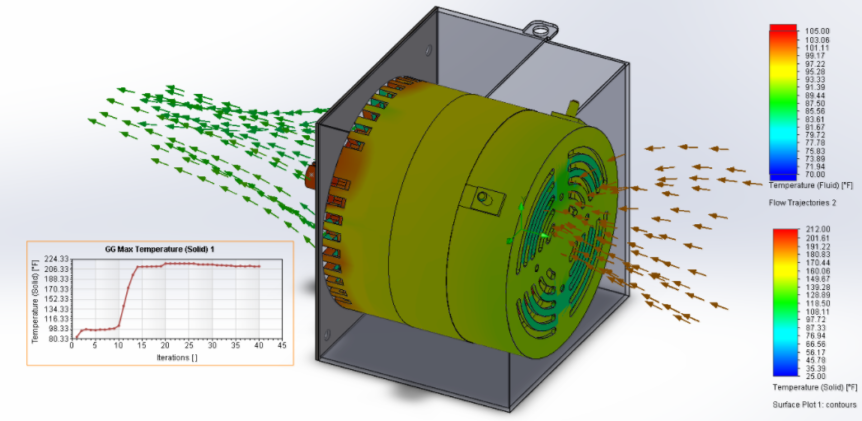Over winter break, the electric racecar team made significant progress designing and updating parts on the racecar. As Winter Quarter begins, we will enter the manufacturing phase and begin assembling and ordering parts for the racecar.
This week, Michael Habana will describe the motor housings and the reasoning behind his design.
The motor housing serves three main purposes: protecting the motors, acting as a scatter shield, and cooling the motors.
The motor housing protects the motors. The Motenergy ME 1003 motors we use are air cooled and thus have perforations at the front and back. Foreign objects and water that enter the motor through these perforations could damage the motor and jeopardize the entire vehicle. To protect them, the motor housing uses a special filter to keep debris and water out.
The second purpose of the housing is to act as a scatter shield to contain any stray parts that may launch from the motor in case of catastrophic failure. Safety is our main priority and we need to ensure that anyone around the vehicle is not in any danger. The casing will be made of 18 gauge 6061-T6 aluminum, which abides with the relevant FSAE rules.
The last purpose of the motor housing is to ensure the motors stay within their operating temperature. The motors possess their own internal fans that rotates at the same velocity of the stator. Issues arise when the motors are operating at low RPM (such as a sharp turn) and the fans cannot provide sufficient flow to cool the motors. Because these are brushed DC motors that rely on high current, they can get hot very quickly. In addition, temperatures in Lincoln (where the competition will be held) easily reach triple digits during the summer months and our motors are only rated for ambient temperatures of 104 degrees Fahrenheit.
With these two parameters in mind, additional airflow from external fans are required to ensure our motors are operating at their maximum potential. Using Solidwork’s Computational Fluid Dynamics (CFD) simulations, various tests were run under an array of conditions to choose a fan to provide additional flow rate. It was found that an external fan providing 0.048 m^3/s (or about 100 CFM) of air would be enough to keep the motors under their maximum temperature.

